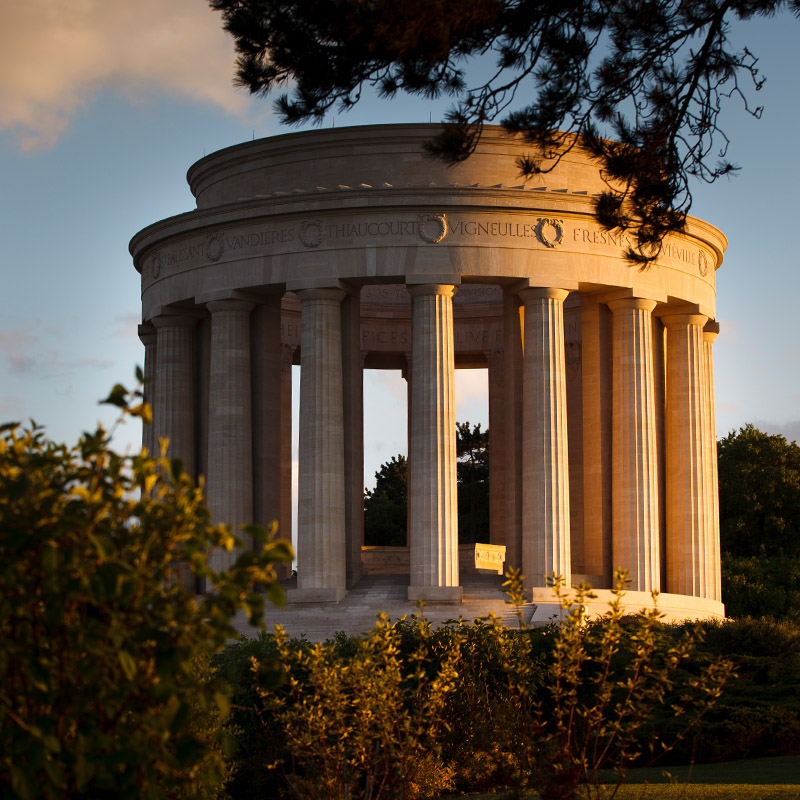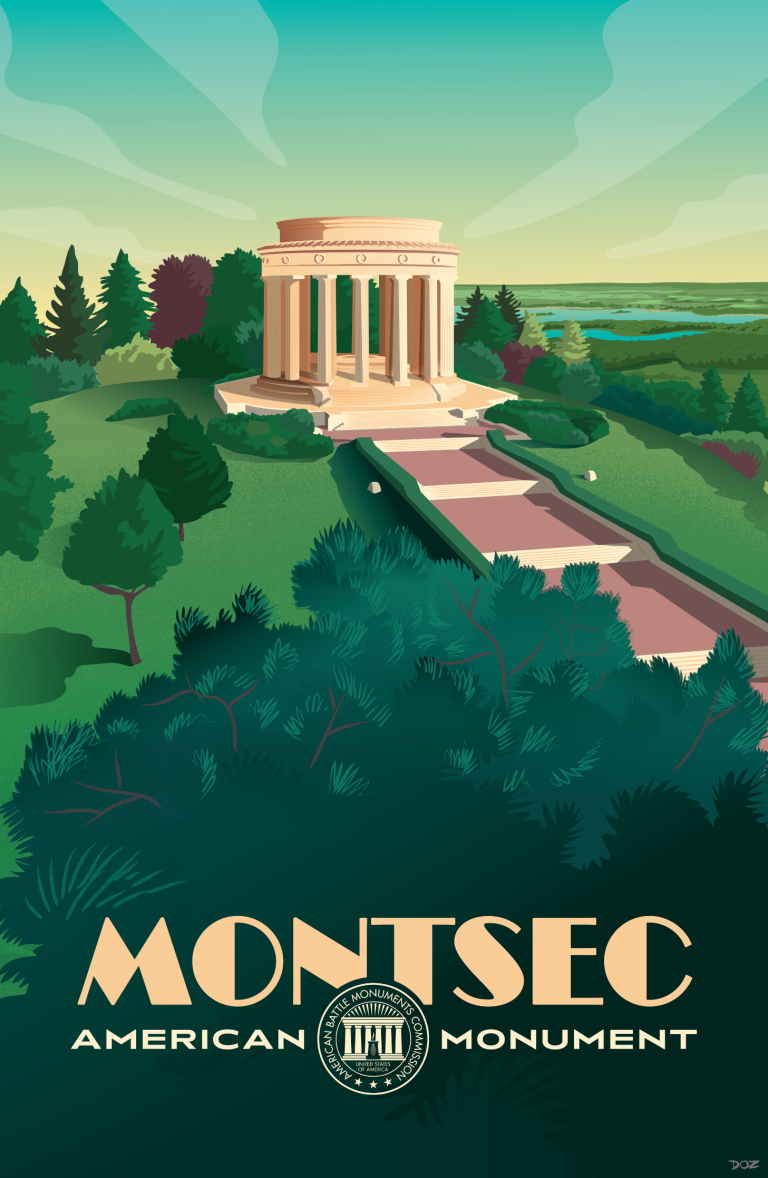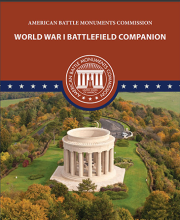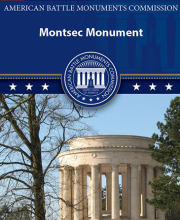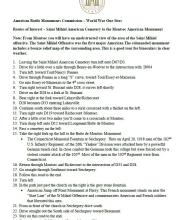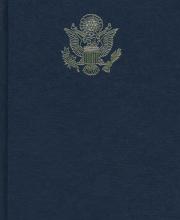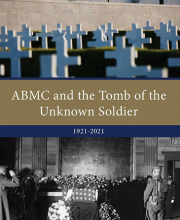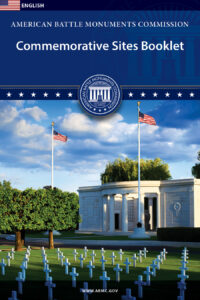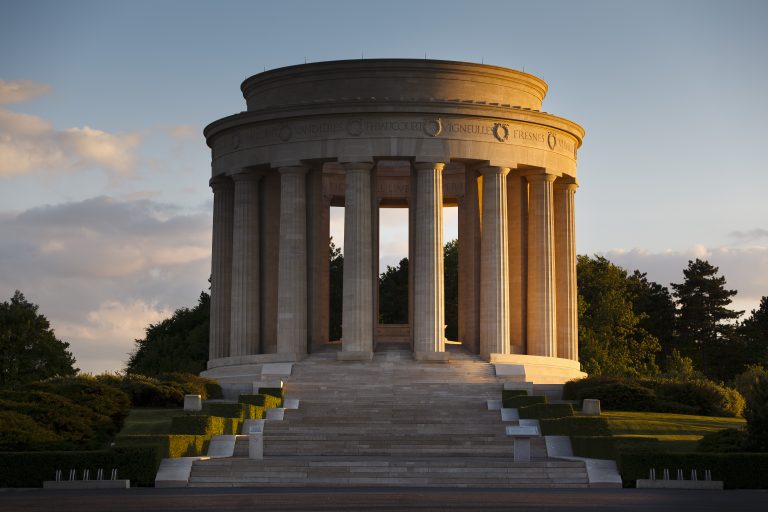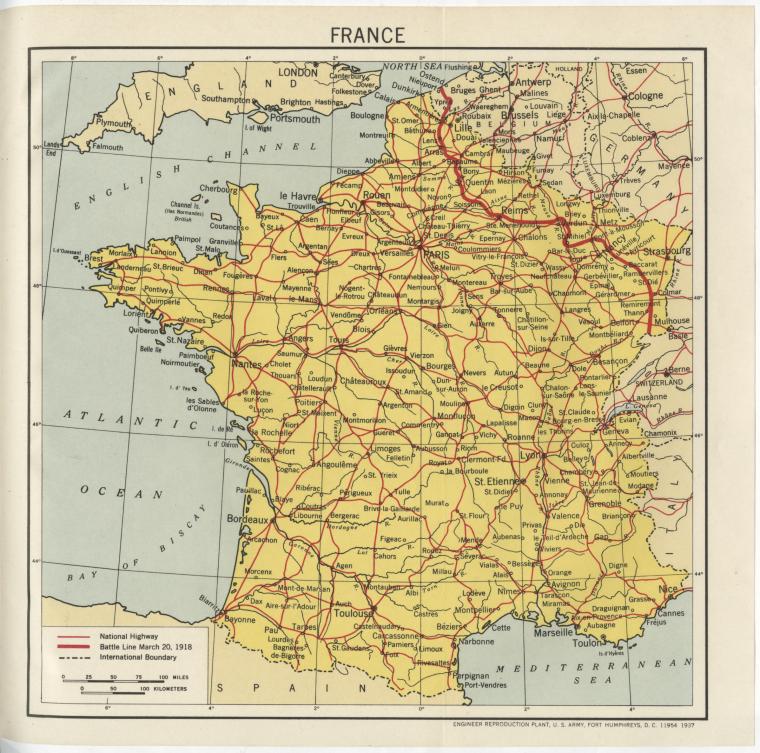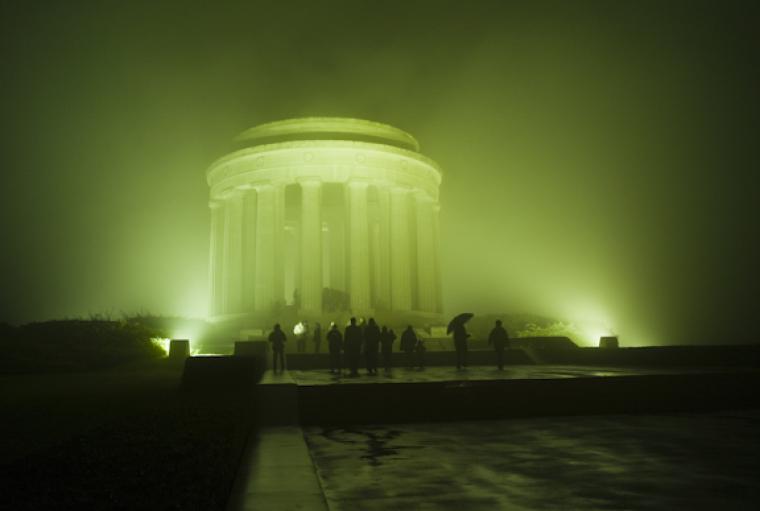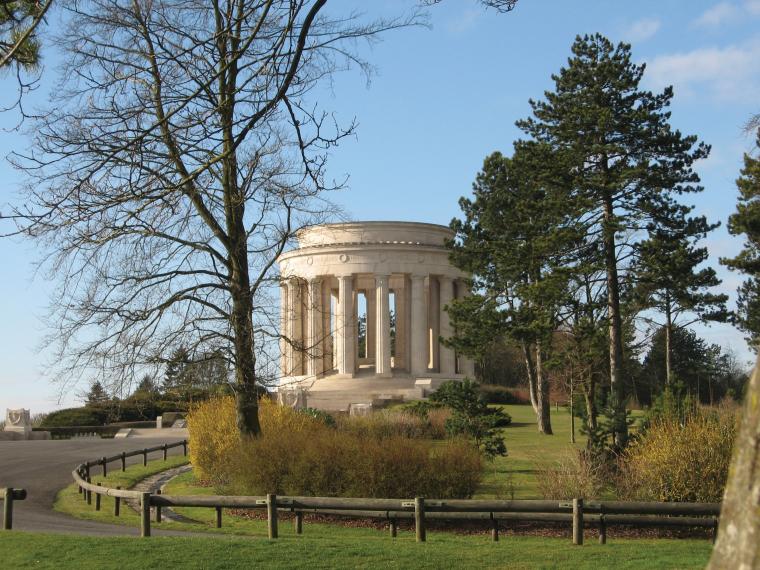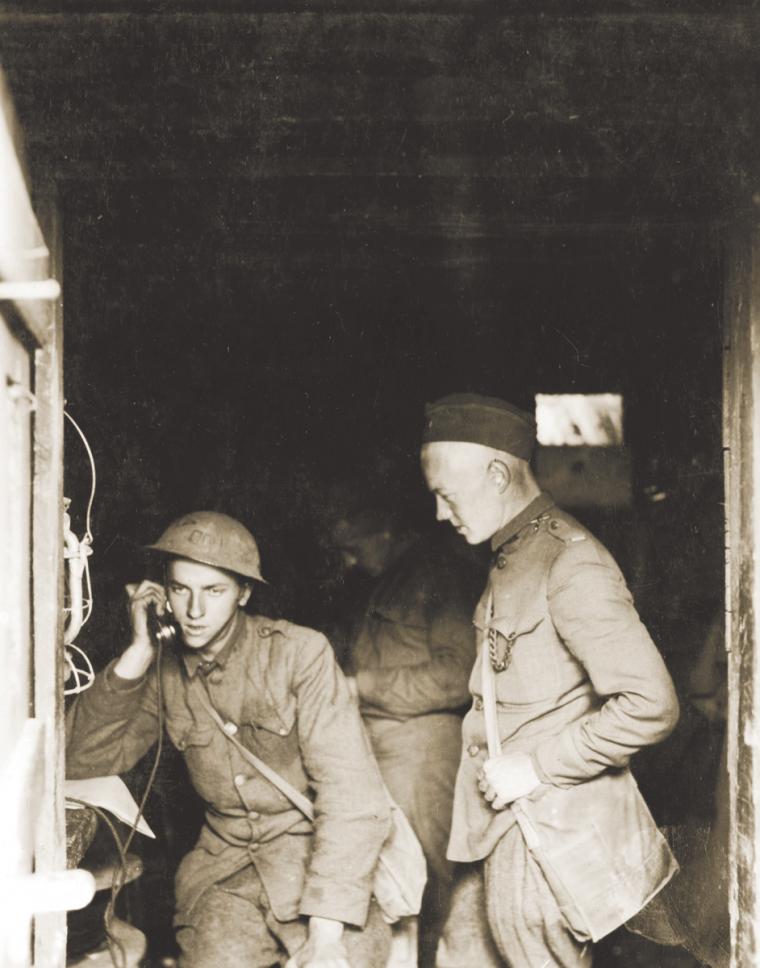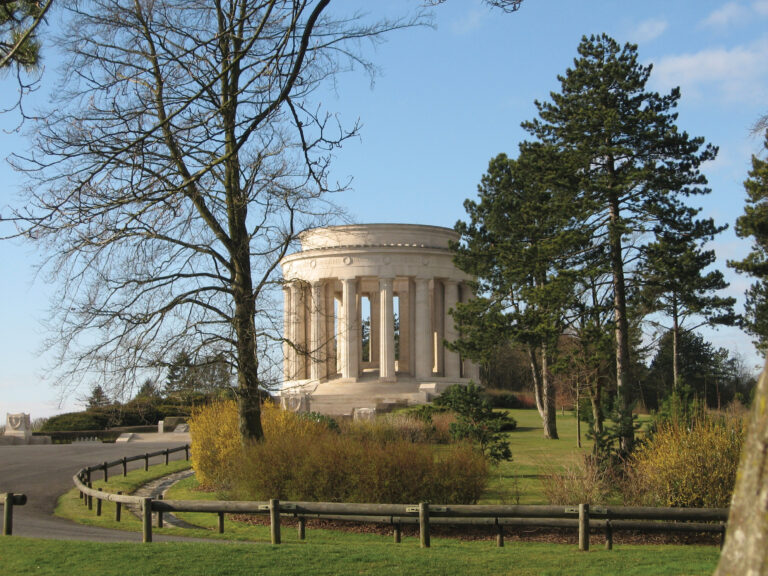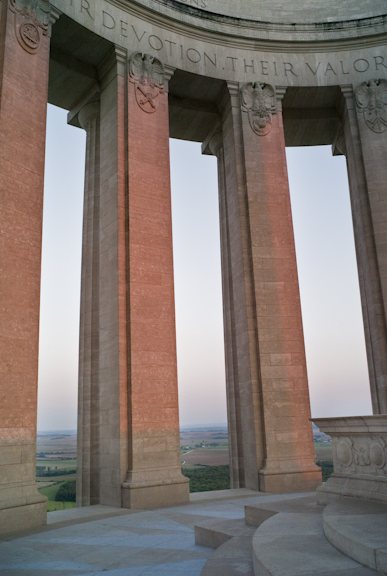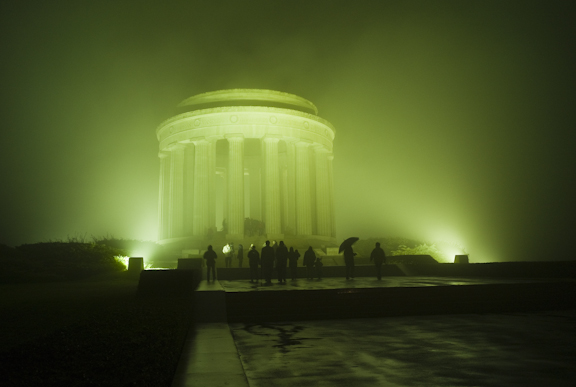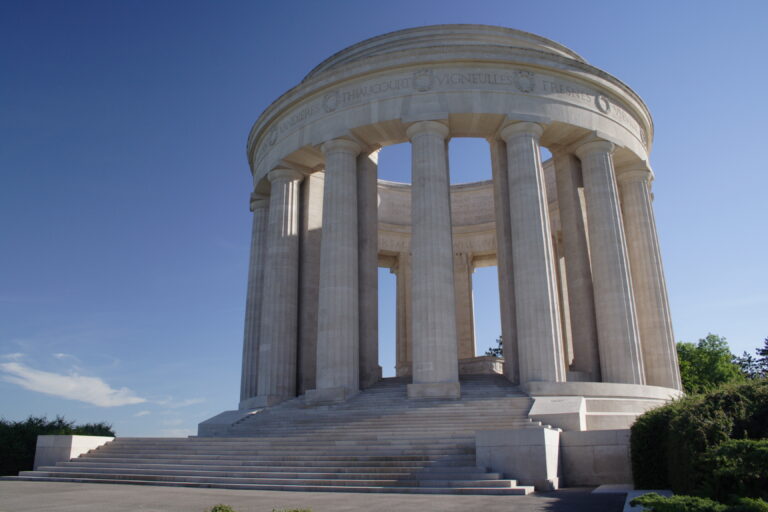The World War I Montsec American Monument is located in Montsec, France, atop the Butte of Montsec.
This majestic monument, commemorating the achievements of the American soldiers who fought in this region in 1917 and 1918, dominates the landscape for miles around. It commemorates reduction of the St. Mihiel Salient by the U.S. First Army, September 12-16, 1918, and operations of the U.S. Second Army, November 9-11. It also honors combat services of other U.S. divisions in this region and in Alsace and Lorraine. Names of nearby villages liberated by American troops are carved upon the outside frieze.
It consists of a classic circular colonnade with a broad approach stairway. Within its center is a bronze relief map of the St. Mihiel salient, illustrating the military operations that took place there. The monument was slightly damaged during World War II, but has been repaired. From this vantage point the trenches used during the fighting can be seen.
The World War I Montsec American Monument is located atop the Butte of Montsec, France, 12 miles southwest of St. Mihiel American Cemetery and 10 miles east of the town of St. Mihiel. The entrance to the memorial’s access road is immediately west of the center of Montsec Village, France. The Montsec Monument, is reached via Highways D 12 and D 119 to Montsec, then a road up the hill.
 An official website of the United States government. Here's how you know.
An official website of the United States government. Here's how you know. 